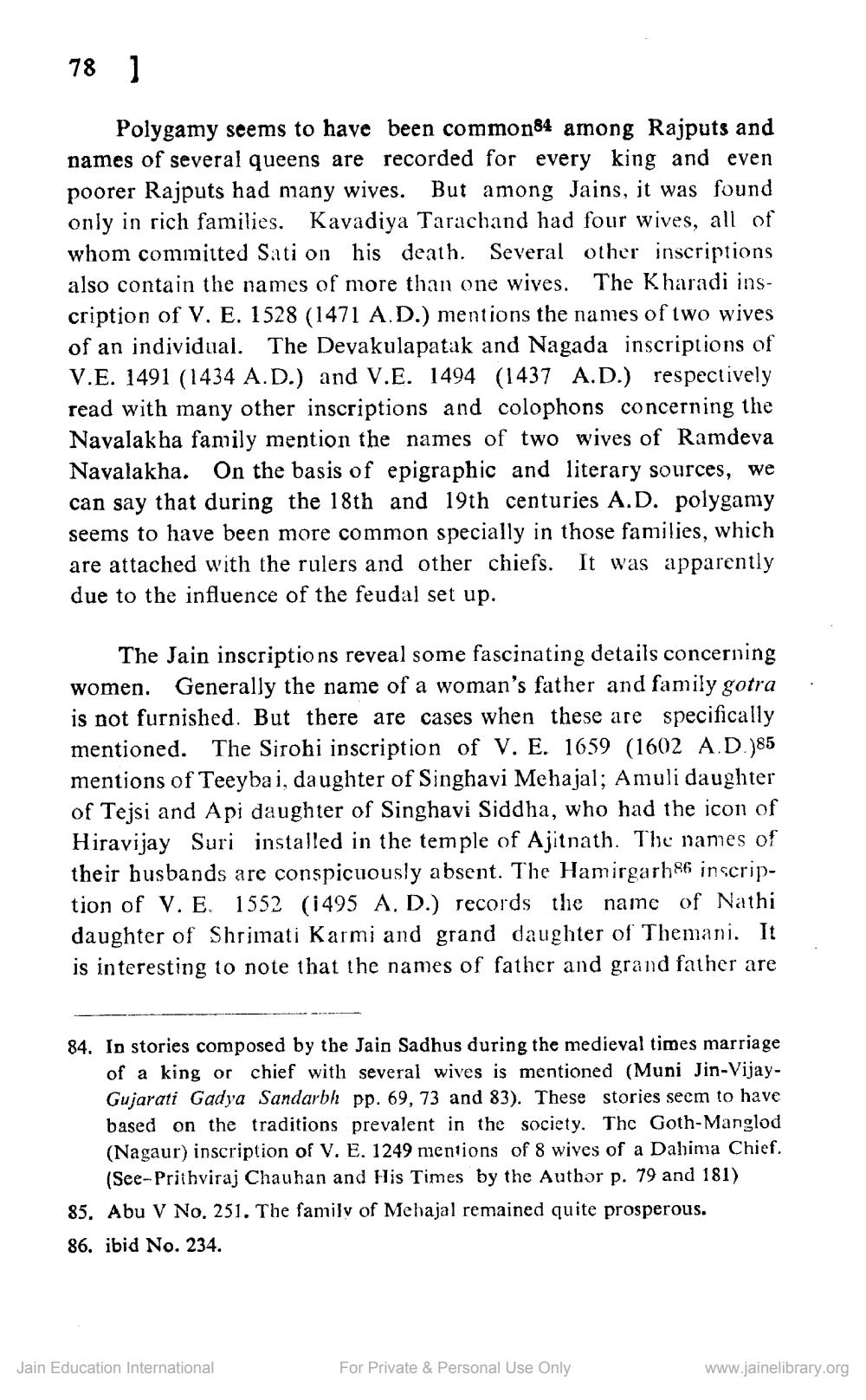________________
78
1
Polygamy seems to have been common84 among Rajputs and names of several queens are recorded for every king and even poorer Rajputs had many wives. But among Jains, it was found only in rich families. Kavadiya Tarachand had four wives, all of whom committed Sati on his death. Several other inscriptions also contain the names of more than one wives. The Kharadi inscription of V. E. 1528 (1471 A.D.) mentions the names of two wives of an individual. The Devakulapatak and Nagada inscriptions of V.E. 1491 (1434 A.D.) and V.E. 1494 (1437 A.D.) respectively read with many other inscriptions and colophons concerning the Navalakha family mention the names of two wives of Ramdeva Navalakha. On the basis of epigraphic and literary sources, we can say that during the 18th and 19th centuries A.D. polygamy seems to have been more common specially in those families, which are attached with the rulers and other chiefs. It was apparently due to the influence of the feudal set up.
.
The Jain inscriptions reveal some fascinating details concerning women. Generally the name of a woman's father and family gotra is not furnished. But there are cases when these are specifically mentioned. The Sirohi inscription of V. E. 1659 (1602 A.D.)85 mentions of Teeybai, daughter of Singhavi Mehajal; Amuli daughter of Tejsi and Api daughter of Singhavi Siddha, who had the icon of Hiravijay Suri installed in the temple of Ajitnath. The names of their husbands are conspicuously absent. The Hamirgarh86 inscription of V. E. 1552 (1495 A, D.) records the name of Nathi daughter of Shrimati Karmi and grand daughter of Themani. It is interesting to note that the names of father and grand father are
84. In stories composed by the Jain Sadhus during the medieval times marriage
of a king or chief with several wives is mentioned (Muni Jin-VijayGujarati Gadya Sandarbh pp. 69, 73 and 83). These stories seem to have based on the traditions prevalent in the society. Thc Goth-Manglod (Nagaur) inscription of V. E. 1249 mentions of 8 wives of a Dahima Chief.
(See-Prithviraj Chauhan and His Times by the Author p. 79 and 181) 85. Abu V No. 251. The family of Mehajal remained quite prosperous. 86. ibid No. 234.
Jain Education International
For Private & Personal Use Only
www.jainelibrary.org




